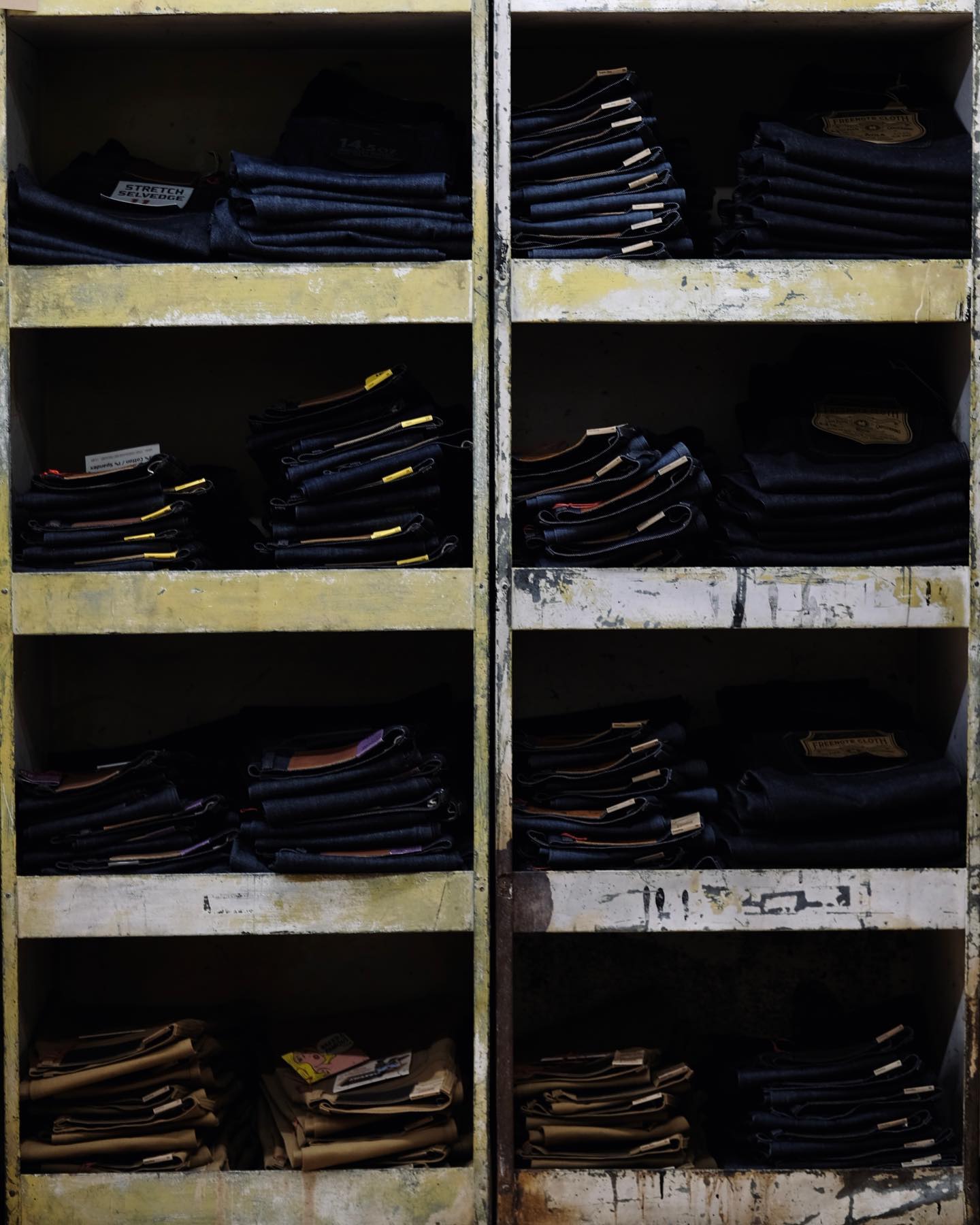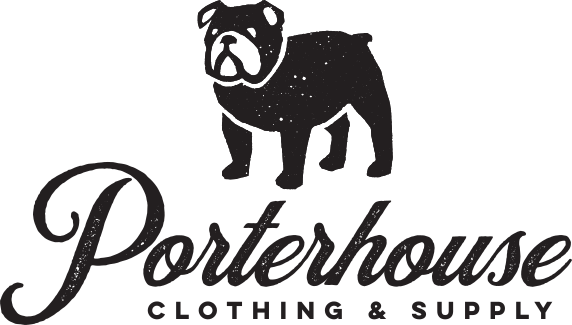
An Introduction to Raw & Selvedge Denim

Here at Porterhouse we like to talk a lot about the incredible denim we carry. But what makes the brands in our shop different from the pants you can find at Target or Macy’s?
Raw, selvedge denim.
If you’re new to raw or selvedge denim and what that means for a pair of pants, this guide is for you. Let’s dive into the difference in construction.
Raw Denim
What makes a pair of jeans “raw"? Raw denim simply refers to denim that hasn’t been treated or washed. Most modern jeans go through a process of being distressed and washed to break in the fabric and achieve a worn-in look. Raw denim, on the other hand, is practically fresh off the loom.

Raw denim will typically be stiffer and a richer hue of indigo when bought for the first time. While this may sound uncomfortable at first, denim-heads grow to relish breaking in a fresh pair of raws. The initial break-in period is pretty quick, and over the long-term, you end up with a pair of jeans that have conformed to your body and lifestyle. The fades and creases that develop over time on the untreated indigo are 100% unique to you.
Diving in deeper, you’ll find a world of men and women who build theories around washing, freezing and soaking their denim for the best possible fades. While that may not be your calling, everyone can appreciate a pair of jeans that weren’t pre-beaten, ensuring you get every dollar out of them in wear.
Sanforization
While raw jeans haven’t been washed in a traditional sense, most of them have gone through a process called sanforization. This process was invented in the 1920s to remove the guesswork from buying clothing made of materials that might shrink up to 10% after a wash or two. From Denimhunters:
The fabric is fed in between two hot roll bars on top of a stretchy endless rubber belt. The fabric is first moistened, usually by steam. This lubricates the fibres and primes shrinkability.
As the rubber returns to its original length once through the cylinders, the warp yarns shrink and the weft yarns are packed closer together. After the fabric leaves the rubber belt, it enters a dryer, which locks the fibres in their shrunken state.
As of writing, all the denim in our shop is sanforized, so they should only shrink 2-3% on you. But enthusiasts can find brands still making unsanforized denim and go through the shrinking process themselves. If you remember Levi’s shrink-to-fit jeans, it’s a lot like that.
Selvedge Denim
Selvedge refers to a specific way of constructing denim.
The simplest way to spot selvedge construction out in the wild is to flip the leg of a pair of jeans inside out and look for the “selvedge ID” - a narrow, tightly woven band on both edges of the denim fabric. This self-finished woven band ensures that the edges of the denim will not unravel, and is only possible on old school shuttle looms. Modern looms require a cleaning stitch on either end of the fabric, which you’ll see in a typical pair of jeans rather than the selvedge ID.
 These vintage looms slowly criss cross yarns called the warp and the weft. Warp is the yarn that is actually indigo dyed and appears as the surface denim on a pair of jeans. The weft is what you will find on the underside of the warp. This criss crossing process creates a dense weave. In exchange for that robustness, this method uses more fabric, which tends to drive up the cost of selvedge denim.
These vintage looms slowly criss cross yarns called the warp and the weft. Warp is the yarn that is actually indigo dyed and appears as the surface denim on a pair of jeans. The weft is what you will find on the underside of the warp. This criss crossing process creates a dense weave. In exchange for that robustness, this method uses more fabric, which tends to drive up the cost of selvedge denim.
The folks who are dedicated to these classic weaving techniques and the unique products they create also tend to be sticklers for quality. Ignoring any inherent advantages to selvedge construction, selvedge manufacturers can generally be counted on for a top-notch product.
Denim can be raw, selvedge, or both. The combination of construction by dedicated artisans with getting all the wear possible out of a pair of jeans make for lines we truly love and are thrilled to carry here at Porterhouse. It’s a prime example of clothing that will wear in and not out. Clothing that will stand the test of time and look good doing it.
Denim brands we currently carry:

